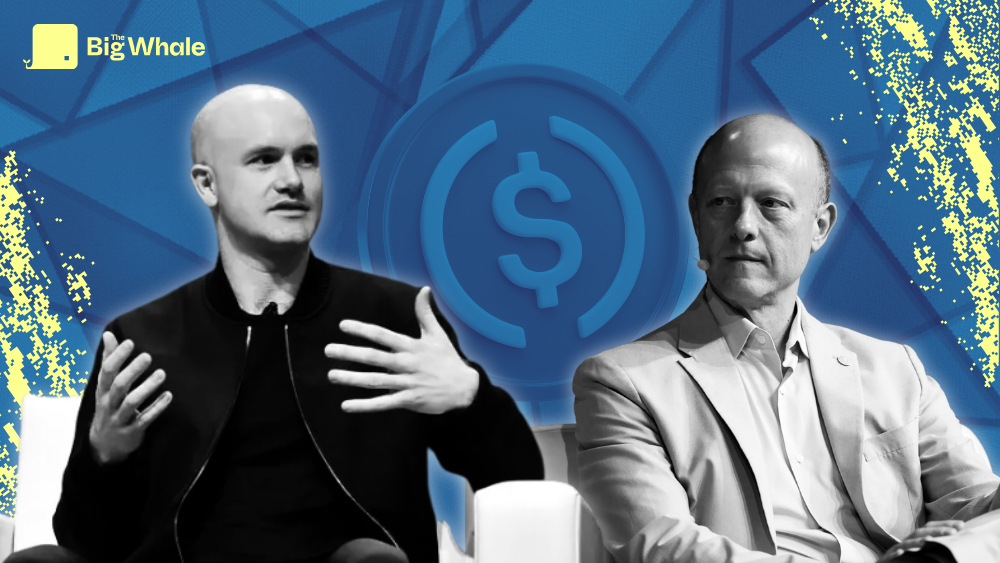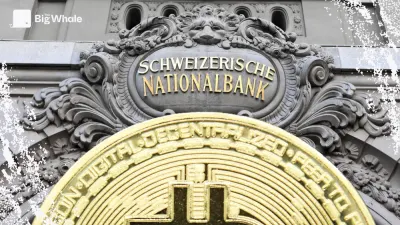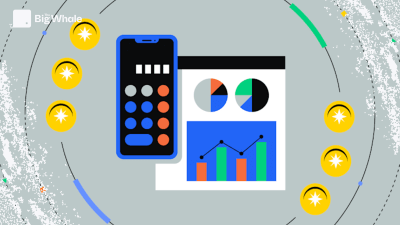TBW - Circle and Coinbase: the secrets of a $172 million pact

The IPO of Circle, the issuer of the stablecoin USDC and EURC ($60 billion and €138 million in circulation), reveals in detail for the first time the extent of its links with Coinbase. As a key distributor, long-standing partner and shareholder, Coinbase is a fundamental pillar in the economy of the world's second-largest stablecoin.
The document filed with the SEC on Tuesday evening in connection with the proposed IPO highlights a multi-dimensional business relationship structured around the shared success of USDC.
$172 million paid to Coinbase
The historic partnership between Circle and Coinbase dates back to 2018, via the "Centre Consortium" which was tasked with developing and regulating the USDC. Although Circle took over the reins of the USDC on its own in the summer of 2023, the collaboration with Coinbase has continued in a different form, and in a very lucrative one.
In 2023, Circle paid Coinbase $172.2 million in revenue sharing generated by interest on USDC backing dollar reserves. This represents a 13.6% increase on the 151.5 million in 2022, and nearly 22% of Circle's total 2023 revenue of $779 million.
By comparison, this revenue shared with Coinbase exceeds the $121 million Circle generated with all its other distribution partners combined.
A major distribution channel
Coinbase's influence is not limited to the financial aspect. In 2023, 30% of USDC issued by Circle passed through Coinbase, making the platform its leading distributor. In 2022, this proportion was even higher, at 36%, reflecting some recent diversification by Circle, but confirming Coinbase's dominant place in bringing stablecoin into circulation.
Coinbase is also a key relay for the stablecoin adoption strategy: its user base, estimated at more than 100 million verified customers, is a key vector for growth.
The development of the Base blockchain, built by Coinbase on Ethereum, is moreover identified in Circle's documents as a major opportunity for the USDC's decentralised use cases.
>> How Base leverages Coinbase (and vice versa)
>> Base: Analysis of L2 developed by Coinbase
A contract locked in until 2027
Circle and Coinbase signed a new commercial agreement in August 2023, set to last at least four years, until August 2027. The agreement provides for interest income on USDC reserves to be shared in proportion to the share of circulation that passes through Coinbase.
It also gives Coinbase a say over certain aspects of USDC governance and incorporates penalty clauses should Circle issue a competing stablecoin without prior agreement.
Circle's document explicitly stresses that dependence on Coinbase is a risk: any termination of the partnership, any change in Coinbase's strategy, or even a simple change of control in its capital, could have "a material adverse impact" on Circle's financial results.
Coinbase, also a Circle shareholder
The IPO document also reveals that Coinbase holds approximately 13.8% of Circle's share capital, in the form of Class A shares. This makes Coinbase one of the company's largest shareholders, although it does not have a casting vote. Coinbase's level of ownership has decreased slightly since the initial agreement, but remains strategic, particularly in relation to the USDC revenue sharing agreement.
This capital link reinforces the logic of alignment between the two companies, but also adds to the structural dependence that Circle recognises on its main partner. In its IPO filing, Circle indicates that Coinbase's economic interests may diverge in the future, posing a potential risk.
Binance: a strategic break
The IPO also documents the end of a key partnership with Binance. In September 2022, Binance announced that it would stop displaying the USDC on its platform, in favour of its own stablecoin BUSD. This decision had led to a sharp drop in USDC circulation, particularly on international markets.
Circle reveals that the end of native USDC integration on Binance has led to a drop of more than $10 billion in the capitalisation of its stablecoin in just a few months. The paper says that in response, Circle has entered into discussions with other exchanges, including Kraken, OKX and Bybit, to compensate for the loss of exposure on Binance.
Since the withdrawal of BUSD in 2023 (following SEC proceedings against Binance), Circle says it has gradually regained ground, but is not yet back to its pre-breakup level: the USDC's capitalisation has fallen from $55 billion at the start of 2022 to around $24 billion at the end of 2023.
Nevertheless, it exceeded $60 billion in the first quarter of 2025, an all-time high for Circle. Proof that the trend has turned around significantly, even if world leader Tether ($144 billion) is still a long way off.
>> Jeremy Allaire (Circle): "We want to be at the centre of the global financial system"



